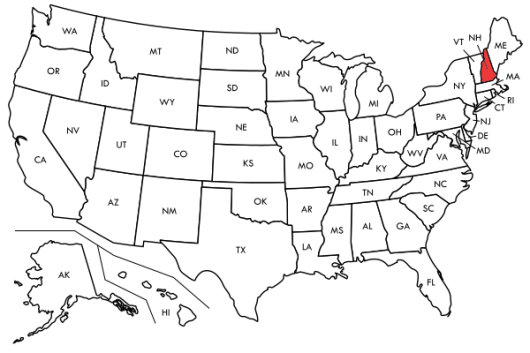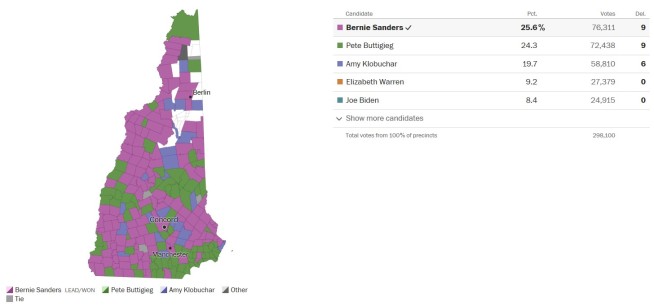Welcome to the fourth chapter of my U.S. Elections series. I decided to start this series of posts based on conversations I’ve had with people, who realise that U.S. elections are important, but can’t get their heads around what’s going on. They’re right to be confused, the U.S. election process is nothing like the British one, and so I thought I would help them out with a series of information pieces as the election process goes on. This piece is dedicated to explaining the New Hampshire primary.
After the debacle that was Iowa, you’ll be pleased to know that New Hampshire should be a much more straightforward process. We return to the simple, one-person, one-cross-in-a-box style of voting most of us are so used to. New Hampshire is always the first state to have its primary (Iowa being the first state to have the caucus), and is famously unpredictable. A Northeastern state with a sizeable moderate population, polls have suggested that Bernie Sanders is favourite here, but that’s what they predicated in Iowa too…
Who can vote in the New Hampshire primary is also different to Iowa. New Hampshire is home to a lot of independents, that is, people who are not registered to either main political party. Both the Democratic and Republican primaries in New Hampshire are semi-open, which means registered Democrats and independents can vote in the Democratic primary, and registered Republicans and independents can vote in the Republican primary. The only rule is that registered party members cannot vote in the opposite party’s primary.
Key facts about the New Hampshire primary
Date: 11th February 2020
Location of the state:

Number of Democratic delegates up for grabs: 24 (plus 9 superdelegates)
Number of Republican delegates up for grabs: 22
Democratic winner: Bernie Sanders by percentage of vote, tie between Sanders and Pete Buttigieg for delegates (Sanders: 25.6%, 9 delegrates, Buttigieg: 24.3%, 9 delegates)
Republican winner: Donald Trump (all 22 delegates)
Breaking down the Democratic results

This was a state that Bernie Sanders won convincingly in 2016, with 61% of the vote. This result was much, much closer, with a 1.6% margin for Sanders. However, in 2016, Bernie Sanders had only one serious opponent, and that opponent just happened to be the woman who went on to win the Democratic nomination, Hillary Clinton. This time around, Sanders still has, in my opinion, four viable opponents with another set to join at the Nevada caucuses.
Much has been made of the “surprising” margin of victory, but if you really scrutinise the current Democratic race, surprise is hardly the word I would use. Pete Buttigieg, who finished second, has seen a surge of support since his “victory” in Iowa (although a recanvass is underway in that state, which is why I still refuse to call that race yet). New Hampshire, as I said above, is a notoriously mixed state, favouring both moderates and progressives at the same time. In the end, it should not be a surprise that the leading moderate (Buttigieg) and the leading progressive (Sanders) both did very well in the state.


One thought on “U.S. Elections: Chapter 4 – New Hampshire”